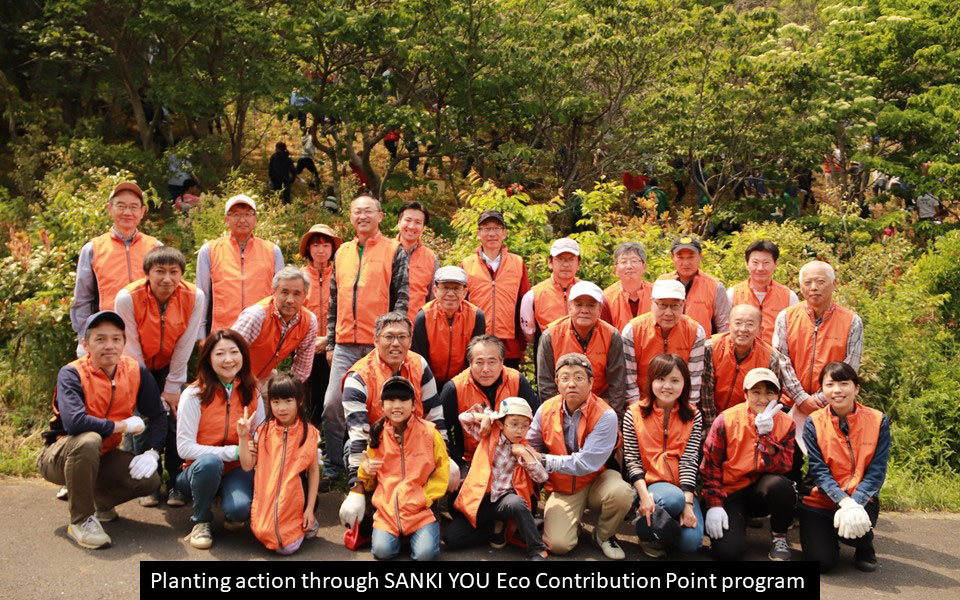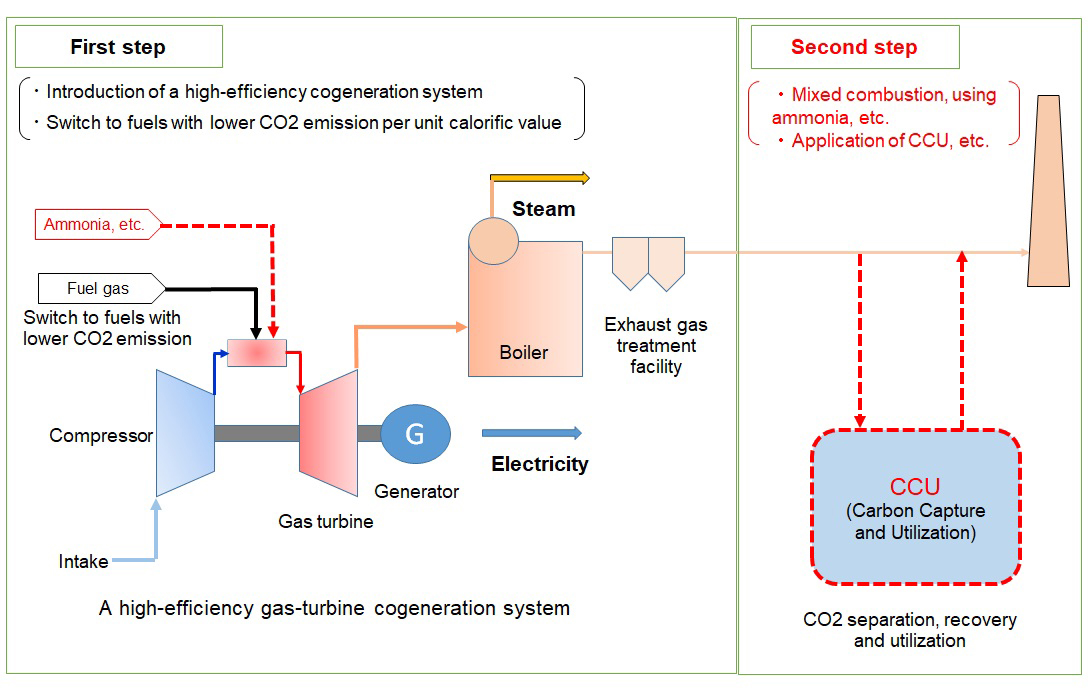Biomass gasification-based power generation using local wood resources
SANKI ENGINEERING CO.,LTD.
Outline
Currently, power plants around the country are adopting wood biomass power generation facilities. The majority of these facilities are high-efficiency 5MW and larger boiler + turbine power generation systems that require over 60,000 tons of logs annually. These facilities mainly use imported lumber.
On the other hand, small- and medium-sized facilities 2MW and smaller are relatively able to gather lumber locally. These facilities enable the appropriate use of local forest resources, promoting local production and local consumption, and stimulating local economies. However, boiler + turbine power generation systems have the problem of seeing a dramatic decline in power generation efficiency at smaller scales.
The wood biomass gasification-based power generation technology we provide uses a gas-powered engine that achieves high-efficiency power generation. This system enables power generation in 2MW systems with power generation efficiency on par with 5MW boiler + turbine power generation systems.
We plan to expand the provision of this technology in both Japan and around the world to contribute to CO2 emissions reductions and the stimulation of local economies.
Description
Approximately two-thirds of Japanese land is covered in forest, and total forest land is nearly 5.2 billion m3 in size. These resources are expected to serve as a renewable energy source on par with wind power and solar power. The healthy development of forest resources results not only in the conservation of national land, but also in the generation of vast ocean resources. Thus far, the forest industry has been forced into contraction due to the influx of foreign-produced materials. However, domestic forest resources are regaining attention as an energy source.
Wood biomass power generation in facilities 2MW and smaller were largely designed to promote the effective utilization of unused thinning wood, a carbon free fuel that thus far has gone largely unutilized. The effective use of unused thinning wood contributes to local economic cycles. Not subject to external factors such as climate or daylight hours, output is steady and contribute to stable 24-hour power generation. For these reasons, the effective use of thinning wood is viewed as a base power source.
Fig-1 shows a general flow of power generation systems. Gasification facilities comprise a gasification furnace that smokes wood chips to produce H2, CO, CH4, and other genesis gases, a gas processing device to cool and refine genesis gas, a power generation device for generating electricity via a gas engine power generator, and a tar processing device for processing produced wood tar (wood vinegar).
First, the lumber used as fuel is transported as logs (estimated water content of 55%) and stored in a stockyard. After approximately six months of natural drying (estimated water content of 45-50%), the logs are processed into wood chips. These chips are injected from the top of the furnace and pass through each zone within the gasification furnace before being ejected as ash from the bottom of the furnace. At the same time, flammable gases flow from the bottom of the furnace towards the top and are fed to the engine.
-Drying zone
Injected wood chips are dried using the heat of the genesis gas
-Heat degradation zone
A wood chip heat degradation reaction results in the production of flammable gas
-Reduction zone
Fixed carbon generated by heat degradation is gasified through a steam reforming process C + H2O > CO + H2
Oxidation zone
Fixed carbon is partially oxidized (combusted) and necessary heat energy is supplied for the gasification reaction
After cooling, tar removal, etc., genesis gas output from the gasification furnace is used as fuel in gas engines to generate power.
Wood tar in the genesis gas is processed using a genesis gas cooler and a wet electric dust collector to remove moisture and water containing tar from the gas. From there, a tar separation tank is used to conduct specific gravity separation to separate the water into heavy tar, which has a high tar content, and light tar, which is mostly water and has a low tar content. Heavy tar has a calorific value sufficient for combustion so it is used as is in the tar combustion device. On the other hand, light tar has a high water content and low calorific value. As such, light tar is fed into an evaporation concentrator that uses excess heat from the system to subject the light tar to an evaporation process that will increase the tar concentration to specified levels. After using this process to increase the calorific value, the concentrated tar is fed into the tar combustion device. Furthermore, evaporated water separated through this process (flash vapor) is subjected to high-temperature oxidation degradation. Conducted inside the tar combustion device heated to over 850°C, this also serves as a deodorization process. These processes make this system a fully self-contained system.
Real-world values for the total power generation efficiency of this system are roughly between 22% and 26% for chips with a water content of 45% to 50%, representing a highly efficient system.
This technology will not only contribute to CO2 reduction through the use of renewable energy, this system also contributes to the stimulation of local economies and the conservation of national land. We plan to expand the provision of this technology in both Japan and around the world to contribute to both local and global society.
Other Innovation Challenges
ZEB, Energy Conservation, Energy Creation, and SANKI YOU Eco Contribution Points
SANKI ENGINEERING CO.,LTD.
Similar Innovation Challenges
Achieve 2050 decarbonization target with Net Zero Energy House!
Sekisui House, Ltd.
Achieving net-zero emissions by promoting renewable energy use through both our monozukuri and products.
DAIWA HOUSE INDUSTRY CO., LTD.







